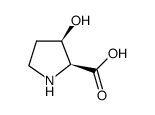| Structure | Name/CAS No. | Articles |
|---|---|---|
 |
3-Hydroxy-pyrrolidine-2-carboxylic acid
CAS:4298-05-9 |
|
 |
L-Hydroxyproline
CAS:51-35-4 |